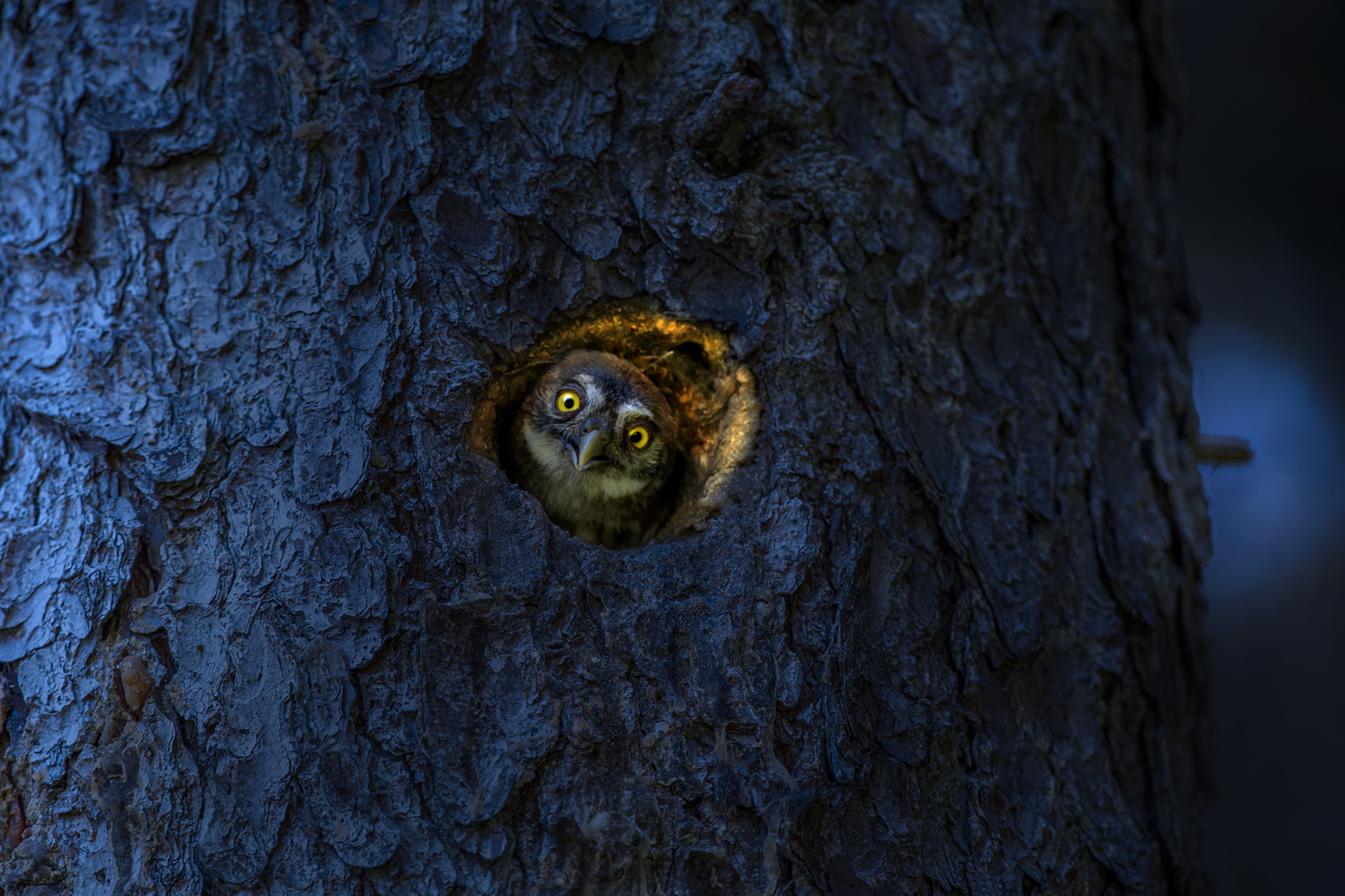The Eurasian pygmy owl (Glaucidium passerinum) is the smallest owl in Europe. It is a dark reddish to greyish-brown, with spotted sides and half of a white ring around the back of the neck.[2] This species is found in the boreal forests of Northern and Central Europe to Siberia.[2]
This is a sedentary species, meaning that adults are resident throughout the year in its range. The exception may be during harsh winters, when the adults may move south. Young of the species usually move in autumn or winter.
[Wikipedia]
The Eurasian pygmy owl (Glaucidium passerinum) is a small owl species found across Europe and parts of Asia. Here’s a short description:
The Eurasian pygmy owl is one of the smallest owls in its range, measuring around 16 to 19 centimeters in length. It has a rounded head with prominent yellow eyes and lacks ear tufts. Its plumage varies in coloration, typically featuring a combination of brown, gray, and white feathers with intricate patterning that provides excellent camouflage against tree bark.
This owl species is primarily crepuscular or nocturnal, hunting during the early morning and evening hours. Despite its diminutive size, the Eurasian pygmy owl is an adept hunter, preying on small birds, rodents, and insects. It employs stealth and agility to capture its prey, often relying on surprise attacks from concealed perches.
Breeding pairs of Eurasian pygmy owls establish territories in dense forests with a mix of coniferous and deciduous trees. The female typically lays a clutch of 3 to 7 eggs in a tree cavity or abandoned nest, which are incubated for around 28 days. After hatching, the parents diligently care for the chicks until they fledge and become independent.
Known for its distinctive call, which resembles a series of whistling notes, the Eurasian pygmy owl communicates with its mate and defends its territory. Despite its small size, this owl species plays a vital role in forest ecosystems, helping to control populations of small mammals and birds.
Overall, the Eurasian pygmy owl is a charismatic and resilient bird of prey, perfectly adapted to its woodland habitat and valued for its role in maintaining ecological balance.
Views: 1697
Subscribe to the newsletter:
